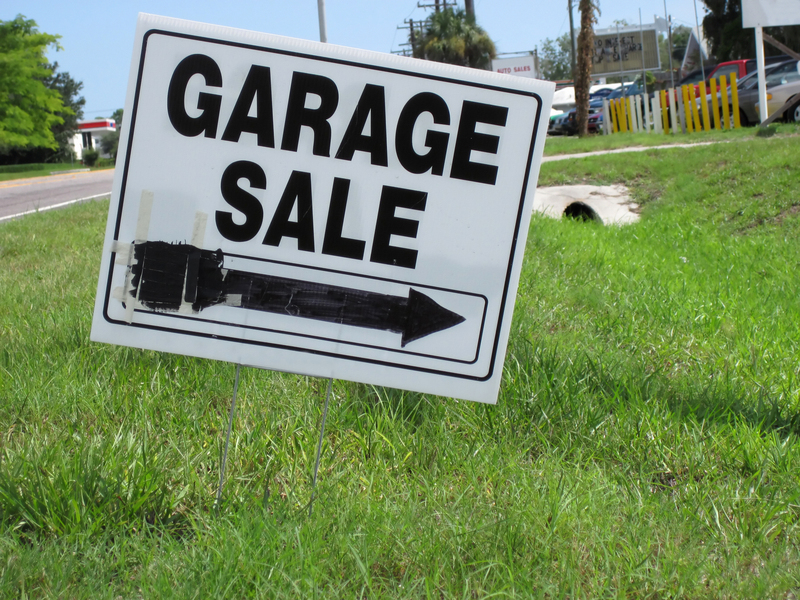Redefine Your Space: The Transformative Effects of Decluttering for Minimalism
In an increasingly hectic world, the spaces we inhabit can reflect and amplify the chaos of our lives. The growing trend of minimalism and the process of decluttering offer more than just a home aesthetic -- they promise mental clarity, improved well-being, and a profound shift in how we experience our daily environment. In this comprehensive guide, discover how redefining your space through decluttering can usher in a transformative minimalist lifestyle.
What Is Decluttering and Why Does It Matter?
Decluttering is the intentional process of removing unnecessary items from your surroundings to create a more organized, functional, and calming environment. It's the cornerstone of minimalism, a movement that advocates for living with less to focus on what truly matters. But why does decluttering matter so much?
- Boosts Mental Well-Being: A cluttered space often translates to a cluttered mind.
- Enhances Productivity: An organized environment helps you focus and reduces distractions.
- Saves Time: Less time is wasted searching for items, leading to a smoother daily routine.
- Inspires Mindful Living: Letting go of excess possessions cultivates an appreciation for what you have.
Minimalist decluttering is not just about cleaning; it's about curating your life and home so that every possession serves a purpose or brings you joy. By letting go of what no longer serves you, you create space--both physically and emotionally--for growth, creativity, and peace.

The Science Behind Decluttering and Minimalism
Scientific research supports the transformative benefits of minimalist decluttering. Studies suggest that clutter increases stress, decreases productivity, and can even trigger unhealthy behaviors. Conversely, an organized and minimal environment promotes calmness and clarity.
- Psychology Today highlights that clutter overloads the senses, making it hard to focus and process information efficiently.
- Research from the Princeton University Neuroscience Institute found that physical clutter competes for your attention, leading to decreased performance and increased stress.
- Minimalist environments are associated with lower cortisol (stress hormone) levels, improving overall health and wellness.
Why Embrace Minimalism?
Minimalism is more than an aesthetic -- it's a lifestyle. Embracing minimalism through strategic decluttering can lead to an array of benefits, including:
Mental and Emotional Clarity
Removing unneeded possessions can have a surprisingly deep emotional impact. Decluttering fosters self-awareness as you reflect on what matters most. The psychological benefits of minimalism include feeling lighter, less anxious, and more in control of your environment.
Financial Freedom
Minimalism discourages impulse buys and redundant purchases. By actively considering each acquisition, you spend less and invest more in meaningful experiences or high-quality items that last.
Improved Focus and Productivity
Minimalist decluttering reduces distractions. A streamlined workspace or home allows for better focus on tasks, creative projects, or relaxing with loved ones.
Environmental Benefits
Contributing to declutter minimalism means buying and discarding less. This not only helps the planet by reducing waste, but also encourages mindful consumerism and sustainability.
How to Start Decluttering for Minimalism
If the idea of minimalism seems daunting, start small. Remember, minimalist decluttering transformation is a journey, not a one-time event. Here are actionable steps to begin:
1. Define Your 'Why'
Why do you want to simplify your space? Perhaps you crave a calming home, wish to boost productivity, or want to free up mental energy. Understanding your motivation will keep you focused during the process.
2. Start with One Area
Tackle a single drawer, shelf, or closet first. Breaking the task into manageable chunks prevents overwhelm and builds momentum.
3. Sort and Categorize
- Keep: Items you use regularly or bring genuine joy.
- Donate or Sell: Useful but unnecessary items can enrich someone else's life.
- Recycle or Discard: Anything that is broken or no longer needed.
4. Ask the Important Questions
- Have I used this in the last year?
- Does this item support my ideal lifestyle?
- Is it functional, beautiful, or meaningful?
5. Implement Minimalist Organization
Invest in organizational tools that fit the minimalist ethos--sleek storage solutions, invisible shelves, or multipurpose furniture. A place for everything, and everything in its place.
Room-by-Room Guide to Minimalist Decluttering
Decluttering for minimalism varies based on the space. Here's a strategic room-by-room approach:
Minimalizing the Living Room
- Limit surface items--coffee table books, remote controls, decor.
- Choose quality over quantity with furnishings.
- Use cabinets or baskets for items you wish to keep out of sight.
- Embrace natural light and keep windows clear of heavy coverings.
Create a Serene Bedroom
- Keep only essential furniture--a bed, nightstand, and perhaps a dresser.
- Opt for neutral tones and soft textures for calmness.
- Store clothes and accessories efficiently using under-bed organizers or slim closets.
- Avoid electronics to promote restfulness.
Functional, Simple Kitchen
- Clear countertops and store appliances you don't use daily.
- Use drawer organizers for utensils and gadgets.
- Reduce duplicate items -- one good chef's knife is better than many poor ones.
- Adopt a minimalist pantry with staple ingredients.
Optimal Home Office
- Limit desk items to essentials: laptop, notepad, one pen.
- Digitize paperwork to reduce file storage needs.
- Add a single plant for life and freshness.
- Use wall shelves for space-efficient organization.
Bathrooms with Minimal Fuss
- Store toiletries out of sight in drawers or cabinets.
- Keep two sets of towels per person--a minimalist, efficient standard.
- Organize products by frequency of use.
- Choose neutral colors to enhance tranquility.
Tips to Maintain Your Minimalist, Decluttered Space
Decluttering is not a one-time act but an ongoing mindset. Adopting sustainable routines ensures your home remains a sanctuary of calm.
- Adopt the 'One In, One Out' Rule: For every new item you bring in, let go of another.
- Regularly Reassess: Once a month, scan each room and remove what's out of place.
- Practice Intentional Purchasing: Ask yourself if you truly need an item before buying.
- Embrace Digital Minimalism: Unsubscribe from emails, declutter your desktop, and limit unnecessary apps and files.
- Value Experiences Over Things: Invest in memorable outings, travel, or courses instead of material goods.
Common Myths About Decluttering for Minimalism
It's important to address misconceptions that may deter you from embracing minimalist decluttering:
- Myth: Minimalism means having nothing.
Reality: Minimalism encourages keeping what's essential and meaningful, not deprivation. - Myth: You have to follow strict rules.
Reality: Minimalism is flexible and personal--it's about aligning your space with your values. - Myth: It's just for the young or wealthy.
Reality: Decluttering benefits all ages, budgets, and lifestyles. Anyone can start, regardless of circumstance.
The Ripple Effects of Minimalist Decluttering
Once you redefine your space through decluttering, the positive effects ripple throughout your life:
- Deeper relationships - Less time managing possessions means more time with loved ones.
- Newfound creativity - A cleared environment fosters innovation and inspiration.
- Enhanced self-awareness - Focusing on what remains after decluttering spotlights your core values.
- Greater generosity - Letting go makes it easier to share and help others.
- Peace of mind - Calm, open spaces reflect and cultivate a peaceful mindset.
Stories of Transformation
Many who embrace minimalist decluttering report life-changing results. For instance:
"After clearing out years of accumulated 'stuff,' I found not only more space but more time and energy. My stress levels dropped, my creativity soared, and my relationships improved. Decluttering for minimalism was the best self-care I've done." - Lisa F.
"Minimalism has helped me focus on experiences instead of things. My small apartment now feels like a spacious haven. I only own what I love and use." - Alex R.
Your Step-by-Step Decluttering Plan for Minimalism
Ready to experience the transformative effects of decluttering for minimalism? Here's a simple plan to get started:
- Set Aside Time: Even 15-30 minutes daily can lead to remarkable results over time.
- Prepare Supplies: Have boxes or bags for donations, trash, and items to sell.
- Pace Yourself: Tackle one area at a time, celebrate progress, and don't rush.
- Enlist Support: Invite family or friends to join or keep you accountable.
- Donate Responsibly: Find local charities or shelters for items in good condition.

Minimalist Decluttering: A Lifestyle, Not a Chore
Adopting minimalism through decluttering is not about rigidly following rules, but about ongoing self-discovery and alignment. With each step, you'll uncover what truly enriches your life. Remember:
- Minimalism is unique to you -- there's no one-size-fits-all approach.
- Be patient and compassionate with yourself as you make decisions.
- Celebrate progress, not perfection. Every item removed brings you closer to freedom from clutter.
Conclusion: Redefine Your Space for Lasting Transformation
The journey toward minimalist decluttering is a powerful, transformative process that goes beyond cleaning your home--it's about creating a life aligned with your values, fostering well-being, and opening the door to new possibilities. By redefining your space and embracing the minimalist mindset, you'll unlock clarity, purpose, and peace within your environment and yourself.
Ready to begin? Take the first step today--your serene, minimalist haven awaits.